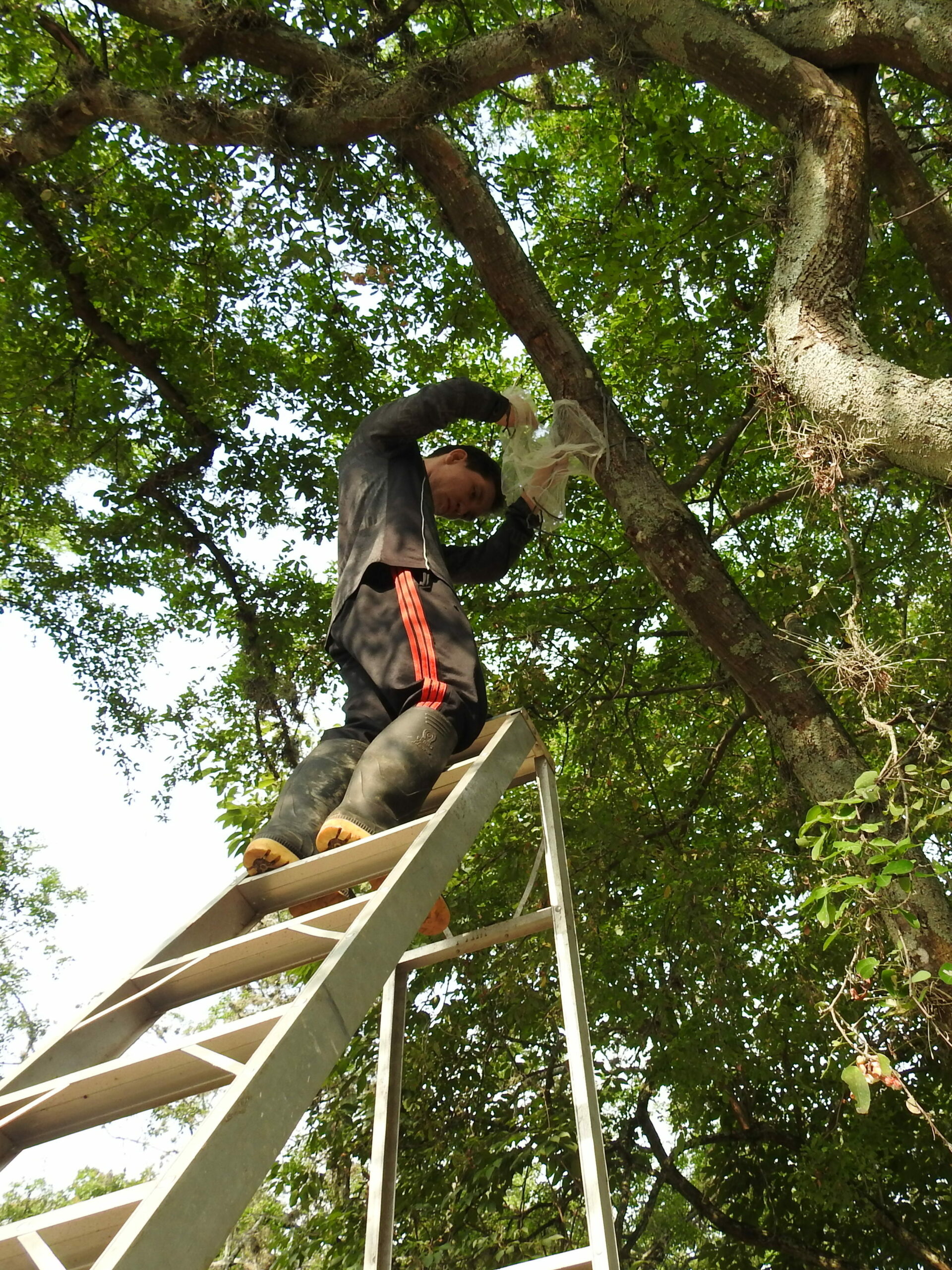The Woodpeckers are key players in conservation, benefiting both fauna and flora. These birds prefer to create their own cavities, which they then leave available for other animals that need cavities but cannot excavate themselves, hence woodpeckers are known as primary cavity nesters. They are so important that if their biology is affected, it can impact the other associated species. For this reason, we decided to study the life history of the Red-crowned Woodpecker, as its distribution in Colombia has increased in the last fifteen years and the ecological aspects known about the species came from only a few specific nests. There were information gaps regarding the species, related to feeding, chick development, and parental care, among others.
From January 2019 to March 2020, we studied the natural history of the Red-crowned Woodpecker with an emphasis on reproduction, parental care, vocal communication, and body condition in Cali, Colombia. Each nest was monitored from its discovery until the chicks fledged. Monitoring woodpeckers is arduous and complex because they use dead branches, standing dead trees, or softwood and large cacti to excavate their nests, at heights ranging from 0.76 to 30 meters. We meticulously quantified the reproductive behavior of the adults. We discovered that this woodpecker species breeds mostly between January and March, and both sexes participate equally in excavation, incubation, and chick rearing. However, the male is the owner of the nest cavity and sleeps with the eggs or chicks, but they also construct other cavities in the same branch or tree for the female to rest and even build additional ones for the chicks to sleep in after they fledge. Interestingly, although they prefer to excavate their nest cavities in trees, they can use artificial cavities such as wooden boxes, possibly occurs when nesting resources (old trees) are scarce.
This scarcity of resources for cavity construction is due to the classic urbanization model where old branches and trees are removed for aesthetic reasons and construction purposes, leading this species to nest in artificial cavities. Another observation we made is that parental investment varies according to environmental and ecological characteristics (precipitation, clutch size, degree of embryonic development, brood size, chick age and sex), and they have a communication system based on six types of vocalizations, distinguishing between those used to alert of a situation and those used to communicate with family members. We also took body measurements and blood cell counts, finding a relationship between the body condition index and the hematologic profile H/L (heterophils/lymphocytes) which are immune system cells. However, we found no relationship between adult condition and the feeding and delivery of food to the chicks.
These findings provide additional evidence of the importance of the Red-crowned Woodpecker, as it plays a crucial role in the habitat by dispersing seeds, controlling larval and adult insect populations, and, as a result of its reproduction, making nesting sites available for other bird species. This makes it an indicator species for available resources in the habitat for cavity nesting, as it uses available softwood. This leads us to think that if nesting resources continue to diminish, this species may increasingly use artificial cavities, severely affecting many animal species that cannot adapt as quickly and depend on the cavities previously built by these woodpeckers. This information provides specific requirements for the species, allowing for informed decisions and appropriate measures in their environment regarding population management and conservation. Additionally, the flexibility in using nesting sites positions the Red-crowned Woodpecker as a reference species when designing conservation plans for other cavity-nesting species.

Yeison Steven Sierra-Sánchez
Ornithology and Animal Behavior Laboratory-OYCA
GEAHNA Group, Biology Department of the Natural and Exact Sciences Faculty
Universidad del Valle, Cali, Colombia.
María Camila Triana Llanos
Ornithology and Animal Behavior Laboratory-OYCA
GEAHNA Group, Biology Department of the Natural and Exact Sciences Faculty
Universidad del Valle, Cali, Colombia.
Lorena Cruz-Bernate
Ornithology and Animal Behavior Laboratory-OYCA
GEAHNA Group, Biology Department of the Natural and Exact Sciences Faculty
Universidad del Valle, Cali, Colombia.
The results of this study were recently published in the Journal of Field Ornithology:
Sierra-Sánchez, Y. S., M. C. Triana-Llanos, and L. Cruz-Bernate. 2024. Life history of the Red-crowned Woodpecker (Melanerpes rubricapillus; family Picidae) in Colombia. Journal of Field Ornithology 95(2):5. https://doi.org/10.5751/JFO-00429-950205.
Header photo: Red-crowned Woodpecker (Melanerpes rubricapillus) by emarys | Getty Images. Expanded using Canva’s Magic Expand AI tool.

